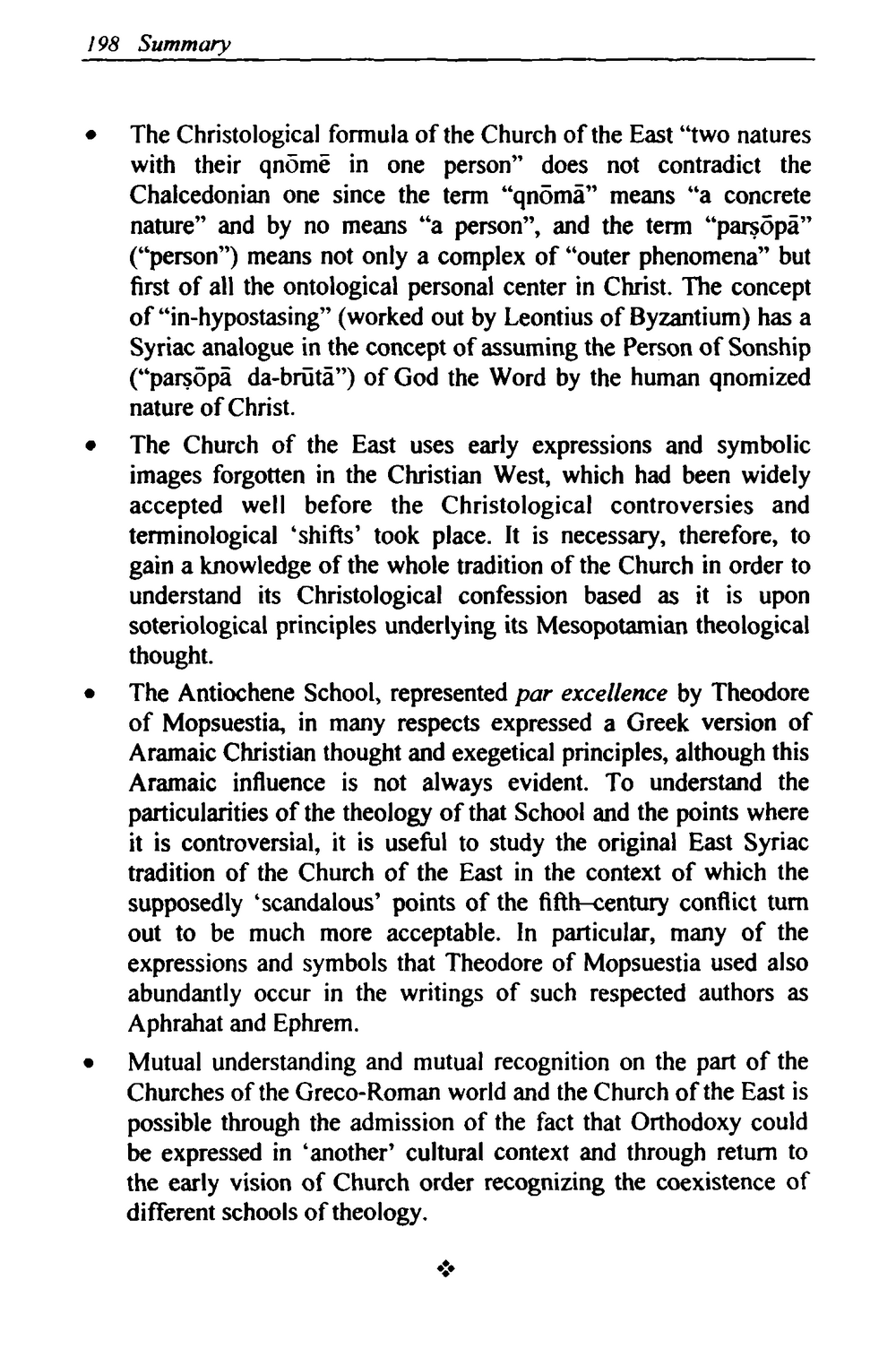198 Summary • The Christological formula of the Church of the East “two natures
with their qnome in one person” does not contradict the
Chalcedonian one since the term “qnoma” means “a concrete
nature” and by no means “a person”, and the term “parsopa”
(“person”) means not only a complex of “outer phenomena” but
first of ali the ontological personal center in Christ. The concept
of “in-hypostasing” (worked out by Leontius of Byzantium) has a
Syriae analogue in the concept of assuming the Person of Sonship
(“parsopa da-bruta”) of God the Word by the human qnomized
nature of Christ. • The Church of the East uses early expressions and symbolic
images forgotten in the Christian West, which had been widely
accepted well before the Christological controversies and
terminological ‘shifts’ took place. It is necessary, therefore, to
gain a knowledge of the whole tradition of the Church in order to
understand its Christological confession based as it is upon
soteriological principies underlying its Mesopotamian theological
thought. • The Antiochene School, represented par excellence by Theodore
of Mopsuestia, in many respects expressed a Greek version of
Aramaic Christian thought and exegetical principies, although this
Aramaic influence is not always evident. To understand the
particularities of the theology of that School and the points where
it is controversial, it is useful to study the original East Syriae
tradition of the Church of the East in the context of which the
supposedly ‘scandalous’ points of the fifth-century conflict tum
out to be much more acceptable. In particular, many of the
expressions and symbols that Theodore of Mopsuestia used also
abundantly occur in the writings of such respected authors as
Aphrahat and Ephrem. • Mutual understanding and mutual recognition on the part of the
Churches of the Greco-Roman world and the Church of the East is
possible through the admission of the fact that Orthodoxy could
be expressed in ‘another’ cultural context and through retum to
the early Vision of Church order recognizing the coexistence of
different schools of theology.
